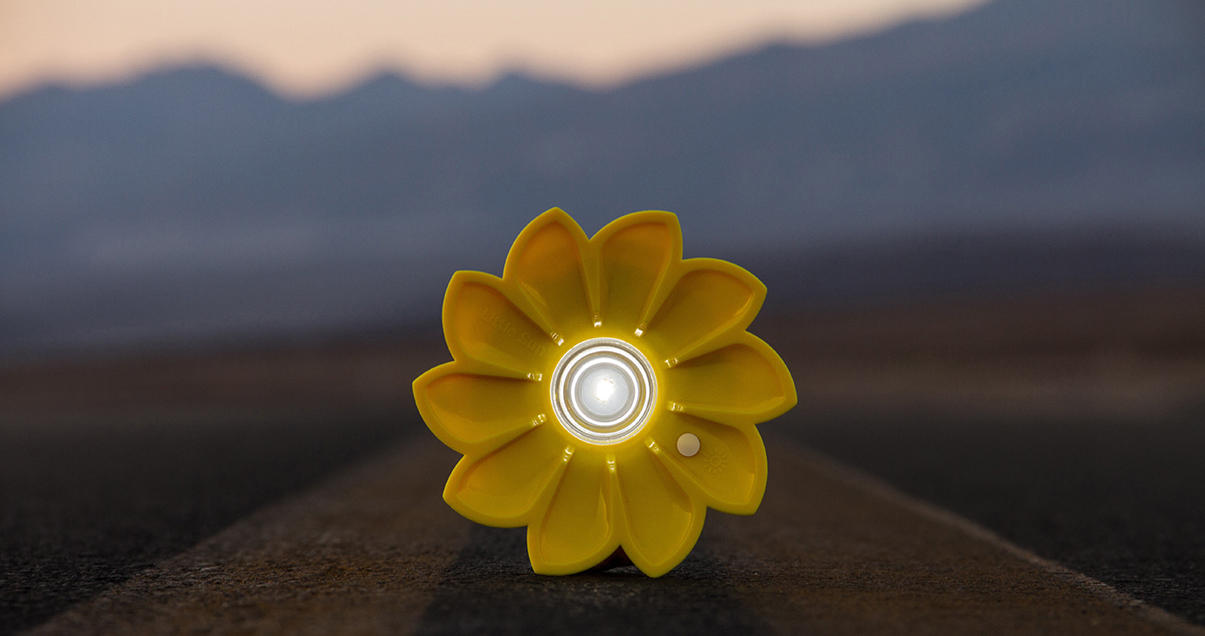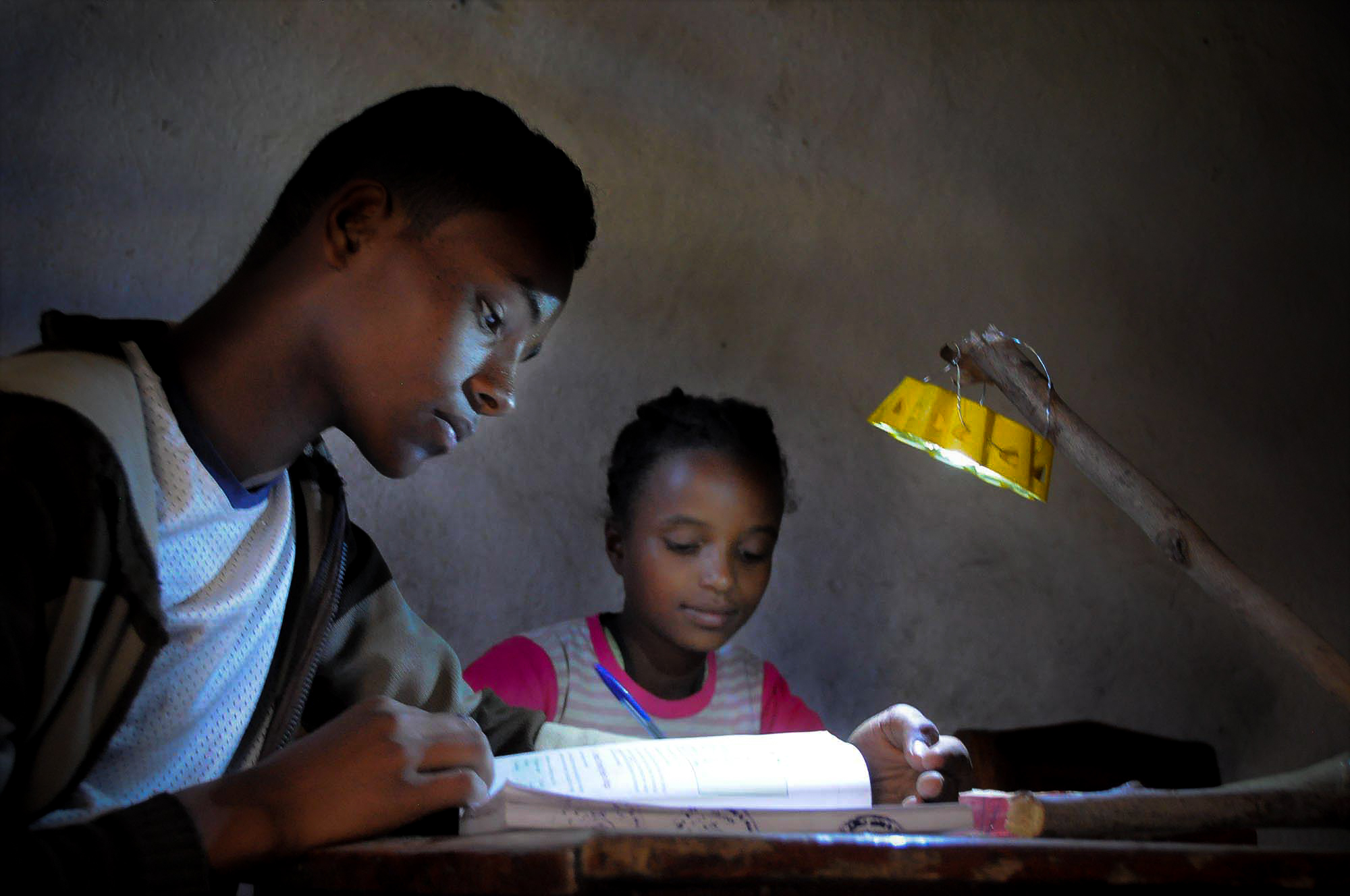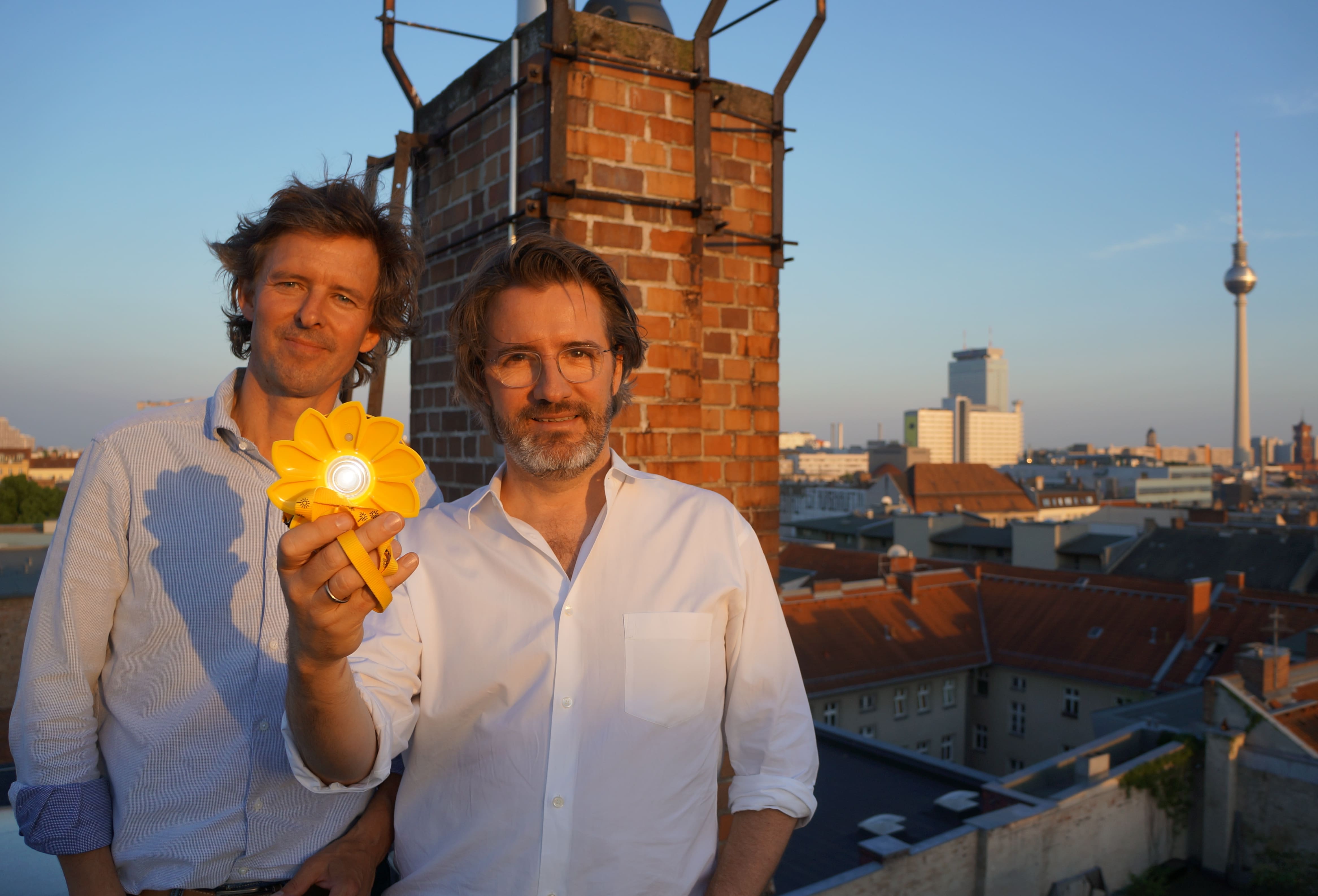Icelandic creativity instead of harmful kerosene

Monofrequency lights, projection film, haze machines, mirror film, aluminum and some scaffolding were all that Olafur Eliasson needed to simulate the rising sun at London’s Tate Modern. In 2003, the Danish-Icelandic artist created his masterpiece: a representation of the sun measuring 26.7 m x 22.3 m x 155.4 m that lit up the museum. Why did he bring the power of nature into the museum? The reason was that for Eliasson, the weather — wind, rain, sun — is one of the few fundamental encounters with nature that we can still experience living in a city.
Eliasson’s sun has the power to save the world
Eliasson’s Little Sun project brings the power of the sun’s rays not to a museum setting, but to anywhere that needs it. The artist collaborated with engineer Frederik Ottesen to bring light to people in the form of a little 2.9 x 12 cm sun. It weighs just 96 grams, is made of yellow plastic and features an LED lamp on one side and a solar panel on the other. Charging the solar-powered lamp for five hours in the sun produces up to 50 hours of light.
Eliasson and Ottesen had already been campaigning for a long time to make energy accessible to everyone, driven by their desire to replace the kerosene lamps that are used in many African countries. Kerosene is not only expensive, but also an extreme health hazard. Nine years after the famous exhibition at Tate Modern, the Little Sun project was launched at the London museum. Once a week, all the lights at the museum were turned off and, in the blackout, visitors could view the galleries and works of art using only the light of Little Sun lamps.


800,000 suns sold in seven years
Since 2012, the proceeds from sales of the lamps have been used to fund aid projects. The duo have adopted a cross-financing approach — in the northern hemisphere, the lamps cost €24.90 each because people earn more in this part of the world, while in the southern hemisphere, Little Sun can be sold at a lower price or even donated free of charge.
More than 800,000 lamps have been sold to date. They are manufactured in China because the duo have not yet been able to set up adequate infrastructure for production in Africa. The entrepreneurs take great pains to ensure that the Chinese manufacturer implements fair and socially acceptable working conditions. The aim is to produce the lamps in Africa someday. It is well worth investing in the purchase of a lamp as the battery, which can be frequently recharged thanks to the product’s integrated solar panel, has a lifespan of around five years — and that is if it is used every day.
Artist, social entrepreneur and motivator
Little Sun is both an artistic endeavor and a social enterprise with a mission to “inspire people to take climate action.” The little solar sun makes it easier to win people over to the cause. The yellow color and the design make a positive impression that overcomes people’s inhibitions about getting involved.
The project includes a variety of activities. One involves staged sunrises at concerts as a symbol of climate protection. Another in Rwanda saw over 24,000 lamps donated to schoolchildren with accompanying workshops to teach the children not only how to use the lamps and change their batteries, but also why climate protection is so important.
Eliasson and the Little Sun team have some big plans. They want to inspire even more people and raise awareness of climate protection. They are hoping to establish partnerships with big companies, such as IKEA. A partner like the Swedish furniture store has the resources and sales infrastructure to help products like Little Sun reach even greater numbers of people worldwide. Their constant concern is that the products look good. After all, Little Sun is also a work of art — and the artist believes that art is what allows him to appeal to more people.

